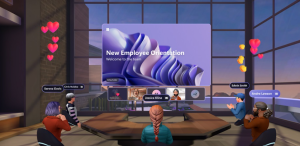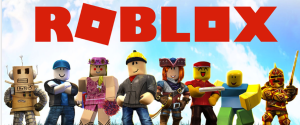In this insightful analysis, Rahul Nath delves into the Metaverse, dissecting the trends and technologies that hold the potential to shape its future.
The metaverse has been a visible, controversial, and often polarising topic for people and organisations. Different companies, including Meta, Epic and Roblox, have defined it but there still remain questions, curiosity and, to some extent, scepticism behind the buzz word.
The very first question though we need to answer is “Does the Metaverse exist?”
Currently, it is still safe to say that the Metaverse exists only as a concept and not as something that has been realised. Virtual Reality has existed for a decade now, and simply putting on a headset and having meetings, social gathering or training does not constitute the Metaverse. Neither does a 3D world where avatars meet up and interact as such interactions and worlds have existed for years in the realm of 3D games. In fact, most “Metaverse” experiences are doing nothing more than replicating what games have been doing for decades. Thus, the Metaverse is a concept and not a reality.
The Metaverse can be a reality years from now, but organisations and individuals can learn about what is to come by understanding some of the trends that, perhaps not as a whole but in parts, may constitute the Metaverse. Firstly, Virtual Reality (VR) alone does not define the Metaverse.

Immersive Tech Challenges: Navigating the Metaverse Journey
As a medium, it may become a larger part of our lives, but we will not see all interactions, be they social or work related, in VR or Mixed Reality (MR). These are due to a few reasons. The price point of most VR or MR sets still remains relatively high for the average consumer who may use it rarely, largely due to the novelty factor. Motion sickness and discomfort in VR are still major issues that have not been resolved since its inception and extended periods of play and interaction are not recommended in these mediums.
The next thing I want to address is 3D world creations and avatars. While these may be new to a few consumers, they have indeed existed since the popularity of 3D games among gamers. Fortnite, Roblox and Ready Player Me all give users an opportunity to take a deep dive into these worlds or create their own avatars. They can be seen as an early inception of what the Metaverse could be. Now, whether it will reach brands, businesses or enterprises outside its core audience and, in doing so, help them push their engagement with the end user to the next level is a question we do not have an answer to at the moment. We have also seen the advent of technologies such as pixel streaming that can render high fidelity, often photorealistic graphics in a browser with the help of services like AWS. This makes access to high-quality 3D content far more accessible to a user who need not worry about having the highest computer specifications to enjoy an immersive experience. But, having said that, it only makes sense for organisations that already have millions of users on their platforms, as the cost of a service like AWS for pixel streaming 3D content is currently not justifiable without a strong user base.
With all these said though, there may be a path forward into the Metaverse with all the examples stated. We don’t know what the Metaverse will be but we can agree that one of the promises the Metaverse makes is of hosting immersive content in a manner that we may not have yet imagined.
The Metaverse can be a reality years from now, but organisations and individuals can learn about what is to come by understanding some of the trends that, perhaps not as a whole but in parts, may constitute the Metaverse.
Challenges and Innovations in the Virtual Landscape
Calling back to the World Wide Web, the internet had many detractors during its heyday. One of the possibilities is that the Metaverse is going to enable seamless interactions between platforms, irrespective of technical specifications and without any latency. An example of this could be having a seamless experience in a 3D-rendered world with real time feedback, whether you access it through your low-end PC, high end laptop, a PlayStation, or any web browser. However, if we take this further, would it even mean we can take assets, characters or memories from one medium to the another (cross play between XBOX and PS)? Of course, there are challenges, the first one being IP considerations and revenue models, but that is what makes this space interesting and disruption.


Then there is the gradual rise of Digital Twins, Digital Humans and the transition of game engines like Unreal Engine to other industries, namely entertainment, architecture, advertising and real time simulation. The landscape of the industry is continuously changing with both success and failure stories. The lesson here is not to overhype anything, have patience and look at long term benefits as opposed to expecting miracles right away. For every success story, there will be many other failures, such is the nature of innovation.
In conclusion, the Metaverse does not exist currently but innovators within the industry are building platforms to make this concept a reality. This will take time. Decades of trial and error. And likely, somewhere down the line, there will be a World Wide Web or smartphone moment that will change the way we interact with each other and the world around us but it won’t happen tomorrow.

